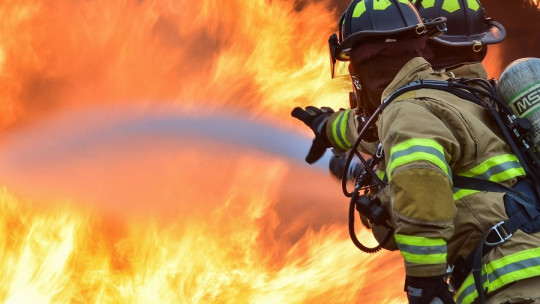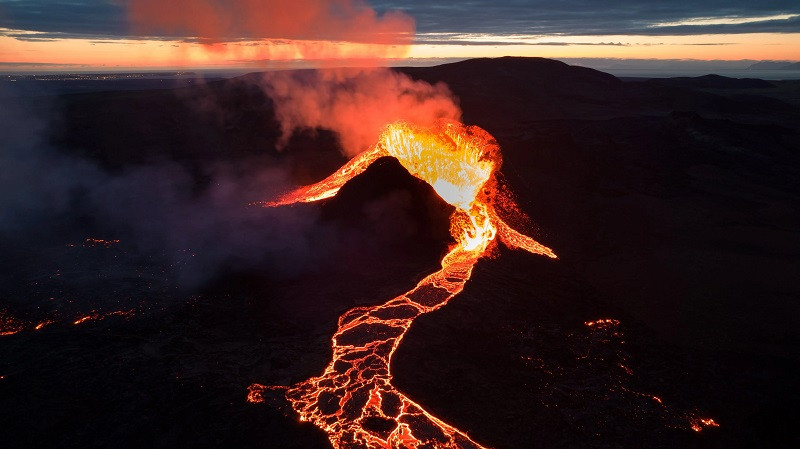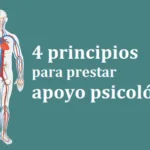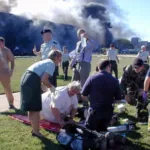
Disasters, catastrophes, accidents… Events that negatively affect people are part of the continuum of human history.
Although the type of accidents have varied depending on the historical moment, they have always been present, and will continue to be. Therefore, it is important to know how to deal with them correctly, helping to ensure that the effect produced on the affected people is not so negative and they can better integrate it into their lives.
To make this possible, Emergency Psychology was developed, with the purpose of applying psychological knowledge and practices in emergency situations.
In the following article we will present the Psychology of Emergenciesdefining it, seeing what characteristics are most appropriate for emergency psychologists to show, as well as the functions and interventions that they perform both for the victim and family members and for the professionals who also work in the catastrophe situation.
What is Emergency Psychology?
The Psychology of Emergencies and Disasters is the branch of Psychology that has the function of not only studying people’s reaction to emergency situations, but also before and during these situations.
Likewise, its mission is to apply psychological interventions to prepare the population for catastrophic situations, taking into account the reaction to a state of alarm and thus be able to increase adaptive behaviors and improve subsequent rehabilitation.
That is, they not only focus on intervention once the catastrophe occurs, but they also act before and during, preparing and strengthening individuals, imparting knowledge and techniques that are useful and functional to them to best face the emergency situation.
The function of this branch of Psychology is very important, since it has been seen that if a correct intervention is not made, the states of alteration that appear in individuals when faced with catastrophes, can lead, with a third of probability, to a acute stress reaction, which may even develop post-traumatic stress disorder
In Spain, the first group of experts in psychological intervention in emergencies was established in Madrid in 1999.following the natural disaster that occurred at the Huesca campsite.

The role of psychologists in emergencies
In order for the function of Emergency Psychology to be achieved correctly, it is important that the professional who carries out the action is prepared to do it optimally.
It has been noted that in addition to the degree in Psychology and the specialization in psychological intervention in emergencies and catastrophes It is necessary that the professional present appropriate skills and personality characteristicsgiven the exceptional situations where they intervene.
The profession of psychologist in emergencies must be vocational, since not all people, even those who have received psychological training, are prepared to act in crisis situations in which this specialist psychologist has to intervene.
It is easy for burnout to occurThat is, job burnout appears, since it requires a lot of involvement, working with people in a crisis situation and can even affect the psychological state of the professional.
Regarding the personality characteristics and skills that the psychologist in emergencies should possess, we could mention:
In the same way, It is necessary that you have experience in carrying out psychological interventions in emergency situations and in crisis situations.
Main functions of this branch of Psychology
The emergency psychologist will intervene both with the victims of the accident and their families, as well as with other professionals who also perform their functions in the crisis situation, for example, doctors and nurses.
The main objectives of action after the occurrence of a traumatic event are the following: minimize the short-term psychological impact, make it easier to cope with situations with high emotional content that can generate stressreduce the probability of presenting a psychological disorder (either in the direct victim or in those close to her), inform about the available help services and facilitate the access of the at-risk population to health care.
As we already pointed out in the first section, the emergency psychologist will carry out his role during and after the intervention in the crisis situation. Below we will mention the main activities to be carried out at all times.
Functions during the intervention
The main activities to be carried out during the intervention in the catastrophic situation are: observe both individual behavior and the relationships between those affected, approach the affected person in an empathetic manner and listen to it (this will help not only a better relationship with the victim, but will also have a therapeutic function), assess the victim’s condition, paying main attention to the risk groups (children, the elderly…) and consider the lost resources and refer them if necessary. necessary to a health center.
In relation to families, the psychologist in emergencies will accompany them in the recognition of corpses and will intervene with family members in crisis, helping in the beginning of a correct elaboration of the duel. In addition, they will also collaborate with the media in order to correctly communicate disasters, always protecting and looking out for the victims and those affected.
Likewise, they will advise managers in relation to psychological and social aspects, provide support and cooperate with other professionals whose work is also linked to the emergency situation. Finally, given the situation, It will be vital to know how to adequately convey bad news.
Functions after the intervention
Once the intervention has been carried out, the activities that can be carried out are the following: monitor the intervention groups, the affected people and especially the most vulnerable groups of individuals; intervene preventively and therapeutically with victims and family members; preparation of technical reports and participate in scientific debates providing a psychological point of view.
Likewise, in parallel to the functions related to the intervention, the emergency psychologist also can carry out advisory functions to professionals in the field of emergencies, health and organizations (these could be 112 emergency centers as well as schools and town halls).
Likewise, so that the practices carried out in the emergency situation are appropriate, they will carry out research functions, both in courses and in pedagogy techniques and teaching methodology.
Psychological intervention in emergencies
Firstly, we will see the interventions carried out on victims, and then mention those applied to professionals.
Intervention for victims
As previously mentioned, disasters affect both the psychological state of the victims and loved ones and the professionals who intervene. Therefore, to reduce the possibility of major damage in the future, it will be essential making adequate psychological contact, listening without criticizing what the victim tells us and thus generating a favorable climateexamining the dimensions of the problem and the number of losses, and assessing past, future and immediate decisions and personal resources
Also, with the purpose of improving the condition of those affected, the possible solutions that can be implemented will be analyzed, taking into account the events of the past, the priorities and obstacles and the various alternatives. Likewise, it will be useful to carry out concrete actions that establish objectives, assess mortality and facilitate the grieving process. It would not be a complete intervention if the patient’s progress were not assessed, so follow-up will be necessary..
Intervention will be applied in different areas of the individual such as: the somatic area, with the aim of preserving physical health and assessing suicide attempts; the affective area, to express and improve the way in which feelings are manifested, as well as learn to manage anxiety; the cognitive area, with the purpose of reflecting on the accident that occurred and analyzing and adapting the thoughts and beliefs of those affected, and the behavioral area, to analyze what changes would be useful as a result of the crisis.
Intervention to professionals
As already mentioned, Working in disaster situations produces great wear and tear on professionals, and may present burnout. For this reason, it is important to intervene by providing resources and techniques to these professionals to better cope with stressful situations, identifying stress and controlling it.
The techniques used will aim at psychological relief (debriefing)., forming groups where they can express themselves safely and thus minimize psychological suffering. The main objectives to achieve are: express feelings, reorganize cognitions, reduce tension, increase resources and promote cohesion with the group and identify major needs.
If burnout has already manifested, a more specialized intervention will be necessary in order to increase the professional’s stress coping resources and thus improve perceived control and self-efficacy. Some of the techniques used are: stress inoculation, cognitive restructuring, relaxation and deep breathing, and social and healthy living skills.








